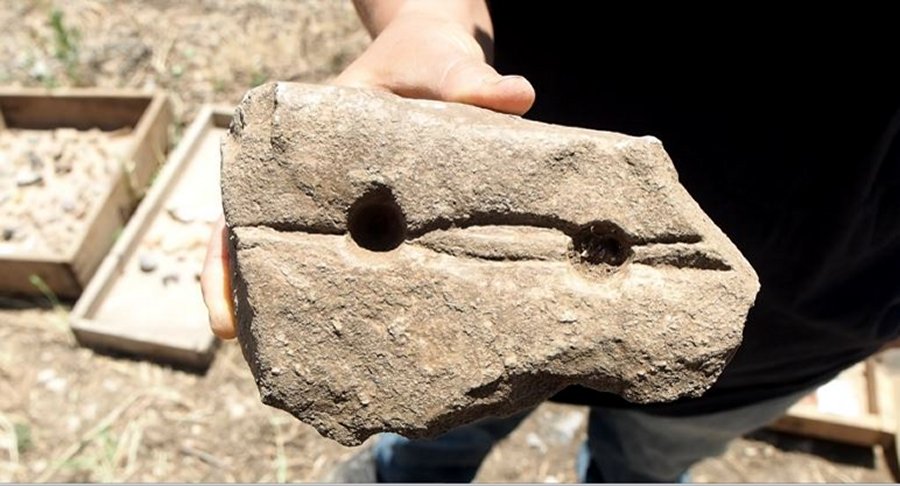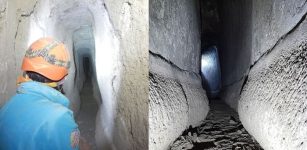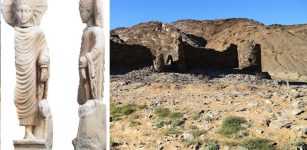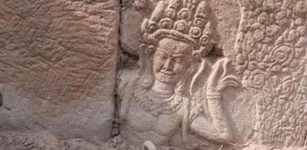AncientPages.com - A rare stone slab that was most probably used in fire making was excavated in Ramat Beit Shemesh, not far from Jerusalem, Israel.

Evidence of producing fire in the region, in the form of ash and charcoal, already exists from the Old Stone Age – about 800,000 years ago; burnt seeds and flint chips were exposed at Gesher Bnot Ya'akov in the north of the country. Image: Israel Antiquities Authority
"The ancient people who lived here during the Pre-pottery Neolithic B period (around 8500-5500 BC) prepared a thick limestone slab with two depressions in it and grooves between them that connected the hollows,” said prehistorian Anna Eirikh-Rose, excavation director on behalf of the Israel Antiquities Authority.
“Some think this is an ancient game board but according to researchers at the Hebrew University of Jerusalem, such slabs were used for starting fire: this device made it possible to rapidly rotate a wooden branch in the hollow (similar to a drill). The rotational energy was translated into heat, and when it came in contact with a flammable material placed inside the hollow, it began to burn and the fire was lit.”
There are only about ten similar slabs from this period in the National Treasures; thus it is a rare artifact. Additional finds uncovered in the excavation include a fragment of a bracelet, flint tools, and numerous animal bones”.
Researchers have earlier found evidence of producing fire in the region, in the form of ash and charcoal, already exists from the Old Stone Age – about 800,000 years ago; burnt seeds and flint chips were exposed at Gesher Bnot Ya'akov in the north of the country.
The use of fire became significantly more important some 10,000 years ago, during the Neolithic period. Evidence of this is reflected by various finds from the period that are related to different fire-generating technologies.
AncientPages.com
Expand for references




















